Elimination of Mother-to-Child Transmission HIV, Hepatitis B and Syphilis in Asia and the Pacific
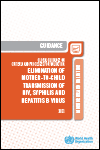
Resource | Guidelines,
Validation of elimination of mother-to-child transmission, or vertical transmission, of HIV, syphilis and hepatitis B virus (HBV), is an attestation that a country has successfully met standard criteria for elimination, or for being at 1 of the 3 levels of achievement on the ‘Path to Elimination’ while delivering quality services for women, girls and their children, through the life-course, respecting human rights and ensuring gender equality and community engagement.
This document, the third version, adds on EMTCT of hepatitis B virus (HBV), bringing together a package of interventions and metrics to support integrated management and monitoring of vertical transmission across a wide range of epidemiological and programmatic contexts.
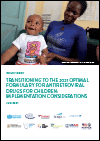
Resource | Publications,
Antiretroviral treatment optimization is a key pillar in the AIDS Free agenda to reach the goal of ensuring 95% of all infants and children have access to lifesaving treatment.
This policy brief outlines key considerations to facilitate effective transition to more clinically appropriate regimens as optimal antiretroviral medicines and dosage forms become available.

Resource | Publications,
Since the framework was launched, UNAIDS and partners have reported annually on progress towards achieving these targets. Since the deadline for achieving the targets passed in December 2020, this is the final Start Free, Stay Free, AIDS Free progress report. Although the targets were global, partners identified 23 countries for intensified focus under the framework. This report specifically highlights progress against the targets in focus countries.
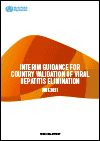
Resource | Publications,
WHO has developed this interim guidance for countries and other stakeholders seeking validation of elimination of viral hepatitis as a public health problem, with a specific focus on hepatitis B virus (HBV) and hepatitis C virus (HCV). It provides a global framework for the processes and standards for validation of elimination, and overall proposes the use of absolute impact targets to validate elimination at the national level (instead of, although equivalent to, the relative reduction targets originally defined in the 2016 GHSS) in combination with a set of programmatic targets.
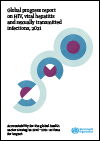
Resource | Publications,
This report provides accountability for the 3 Global Health Sector Strategies (2016-2021) on HIV, Viral Hepatitis and the STIs. The report assesses the impact, progress and gaps, and identifies actions to improve impact. The report also provides new data to assess the achievement of the SDGs targets and gaps towards the Thirteenth General Programme of Work (GPW 13) targets and a decade towards elimination.
The report describes WHO’s important contributions at regional and global level and identifies common actions across the 3 disease areas as well as gaps and priorities as a baseline for the next strategies.
More specifically, the report reviews progress in the health sector response along each of the strategy’s strategic directions, and in each WHO region, and discusses the opportunities for overcoming the remaining challenges to achieve universal access to effective HIV/STI/Hepatitis interventions and for contributing to the broader goal of universal health coverage.
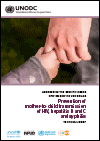
Resource | Publications,
This technical brief provides guidance for the provision of equitable, evidence-informed and human-rights-based services for prevention of mother-to-child transmission (PMTCT) of HIV, hepatitis B and C and syphilis among women who use drugs, and to support countries in their efforts towards elimination of mother-to-child transmission (EMTCT).
As a general principle, all pregnant and breastfeeding women who use drugs should have at least the same access to evidence-based services for PMTCT as women in other populations. Women should not be excluded from health care because of their substance use. All interventions should be voluntary, with informed consent and maintenance of confidentiality, including about a person’s drug use or HIV status.
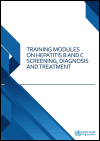
Resource | Publications,
The increasing trend in hepatitis-related deaths is alarming and action can be taken. Cirrhosis and liver cancer due to hepatitis is preventable as treatment prevents disease progression and hepatitis C infection is curable. The Global Health Sector Strategy (GHSS) for Viral Hepatitis 2016-2021 outlines the vision of elimination of viral hepatitis as a public threat by 2030, as part of Sustainable Development Goals for health.
Many countries are developing their national response for comprehensive prevention, treatment and care for hepatitis, as part of Health for All. Delivery of services for screening, diagnosis and treatment of hepatitis B and C as part of existing health services underlies universal health coverage. Capacity to deliver good quality services by all cadres of health care providers for hepatitis care is important.
These training modules have been developed by WHO South-East Asia and Western Pacific Regional Offices as part of biregional collaboration, and were developed following global WHO guidelines for hepatitis which can be adapted to country-specific needs. The modules are available publicly for the use capacity building of health care providers.
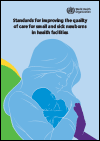
Resource | Publications,
The standards for the care of small and sick newborns in health facilities define, standardize and mainstream inpatient care of small and sick newborns, building on essential newborn care and ensuring consistency with the WHO quality of care framework. The standards will guide countries in caring for this vulnerable population and support the quality of care of newborns in the context of universal health coverage. They will provide a resource for policy-makers, health care professionals, health service planners, programme managers, regulators, professional bodies and technical partners involved in care, to help plan, deliver and ensure the quality of health services.
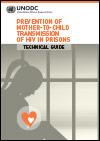
Resource | Guidelines,
The rise in the global female prison population, women’s unique vulnerabilities to HIV infection and insufficient provision and inequitable access to HIV services places the prevention of motherto-child transmission (PMTCT) in prisons high on the agenda of HIV prevention among key populations.
This technical guide is intended to support countries in their efforts to increase their capacity to eliminate mother-to-child transmission of HIV in prison, and achieve the ultimate goal of ending AIDS as a public health threat by 2030, “leaving no one behind”.
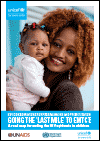
Resource | Publications,
The ‘Last Mile’ road map draws on the latest scientific research and programmatic evidence to describe and recommend strategies to achieve the elimination of mother-to-child transmission of HIV (EMTCT). It includes a synthesis of evidence and country experiences for reaching EMTCT and recommends clear strategies that can improve the coverage, effectiveness and quality of national programmes for the prevention of mother-to-child transmission (PMTCT). The goal of this document is to provide guidelines for coordinated action so that national programmes address local priority areas to achieve EMTCT in an effective, people-centred, efficient and directed manner.





